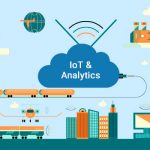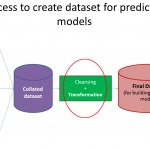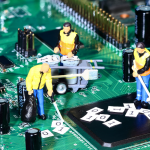
Introduction
The rapid advancement of technology is revolutionizing the way we live, work, and move. From autonomous vehicles to interconnected infrastructure, the concept of smart cities is gaining momentum worldwide. Smart cities leverage technology to improve the quality of life, enhance sustainability, and optimize urban operations. In this article, we will explore the transformative impact of technology on urban environments, supported by existing technologies and real-world examples.
I. The Rise of Autonomous Vehicles
1.1 The Promise of Autonomous Vehicles
Autonomous vehicles, also known as self-driving cars, have the potential to reshape transportation as we know it. With the ability to navigate and operate without human intervention, autonomous vehicles promise increased safety, reduced traffic congestion, improved fuel efficiency, and enhanced mobility for all.
1.2 Technological Foundations
Autonomous vehicles rely on a combination of advanced technologies, including sensors, artificial intelligence, machine learning, and connectivity. Sensors such as LiDAR, cameras, and radar enable vehicles to perceive and understand their surroundings, while AI algorithms analyze data to make informed decisions and control the vehicle’s movements.
1.3 Real-World Example: Waymo’s Self-Driving Cars
Waymo, a subsidiary of Alphabet Inc., has been at the forefront of autonomous vehicle development. Their self-driving cars have logged millions of miles on public roads, showcasing the potential of this technology. Waymo’s vehicles employ a combination of sensors and AI algorithms to navigate complex environments and provide safe and efficient transportation.
II. Building Smart Infrastructure
2.1 Interconnected Infrastructure
Smart cities rely on interconnected infrastructure to enable efficient and sustainable urban living. This includes the integration of various systems such as transportation, energy, water, waste management, and public services. By connecting and optimizing these systems, cities can reduce resource consumption, improve service delivery, and enhance overall urban functionality.
2.2 Internet of Things (IoT) Technology
The Internet of Things (IoT) plays a crucial role in smart city infrastructure. IoT devices and sensors collect and transmit data, enabling real-time monitoring, analysis, and control of various urban systems. This data-driven approach allows cities to make informed decisions, optimize resource allocation, and respond effectively to changing conditions.
2.3 Real-World Example: Barcelona’s Smart City Initiative
Barcelona, Spain, has been recognized as a global leader in smart city development. Through its smart city initiative, Barcelona has implemented various technologies to enhance urban operations. For example, the city uses IoT sensors to monitor waste bins, optimizing waste collection routes and reducing costs. Additionally, smart lighting systems automatically adjust lighting levels based on ambient conditions, reducing energy consumption.
III. Enhancing Quality of Life
3.1 Sustainable Energy Management
Smart cities prioritize sustainable energy management by leveraging renewable energy sources, implementing energy-efficient technologies, and optimizing energy consumption. This reduces carbon emissions, improves air quality, and enhances the overall environmental sustainability of urban areas.
3.2 Citizen Engagement and Participation
Smart cities aim to engage and empower citizens by providing them with information, tools, and platforms to actively participate in decision-making processes. By involving citizens in urban planning and governance, cities can better understand their needs, preferences, and concerns, leading to more inclusive and livable communities.
3.3 Real-World Example: Copenhagen’s Green Mobility
Copenhagen, Denmark, is renowned for its commitment to sustainable urban mobility. The city has prioritized cycling infrastructure, providing citizens with an extensive network of bike lanes and bike-sharing programs. By promoting cycling as a mode of transportation, Copenhagen has improved air quality, reduced traffic congestion, and enhanced the overall well-being of its residents.
Conclusion
The integration of technology into urban environments is transforming cities into smart, interconnected ecosystems. From autonomous vehicles revolutionizing transportation to interconnected infrastructure optimizing resource management, the concept of smart cities holds immense potential for enhancing the quality of life, improving sustainability, and optimizing urban operations. Real-world examples, such as Waymo’s self-driving cars, Barcelona’s smart city initiative, and Copenhagen’s green mobility efforts, demonstrate the transformative impact of technology on urban environments. As technology continues to evolve, the vision of smart cities will continue to shape the future of urban living, creating more sustainable, efficient, and livable communities for all.
















